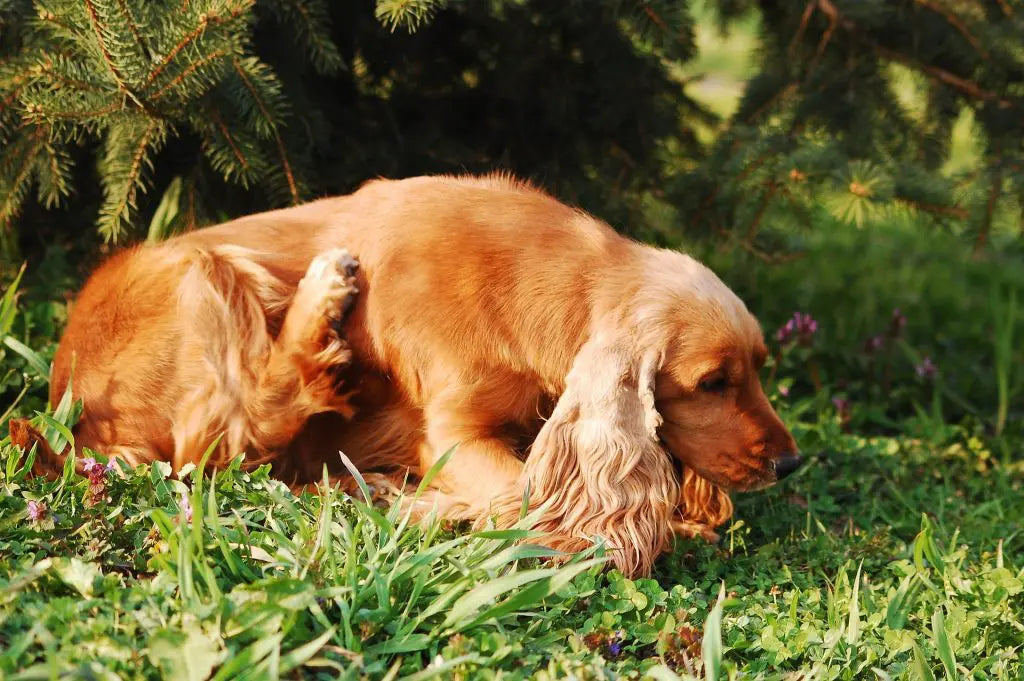Home Remedy For Yeast Infection In Dogs
A yeast infection in dogs occurs when a fungus grows and multiplies, causing skin redness, itching, scaling, and even an odor that is obvious to most dog owners.
Dogs are most likely to develop either yeast dermatitis or yeast otitis but some dogs may even have both types of yeast infections at the same time.
How is yeast infection diagnosed?
Yeast infection generally strikes the paws, skin folds, or ears, where yeast have a cozy space to grow. These infections are easy to diagnose and usually respond well to a topical treatment.
Some dogs may develop both bacterial and yeast infections at the same time. Always make sure you dry your pooch thoroughly after they get out of the water and keep excess hair trimmed to prevent yeast infection.
Helping a dog with yeast infection
There are a few things you can do to help your dog if it has a yeast infection. There are many natural ways to decrease the effects of yeast infection. You can try some amazing natural remedies as well instead of medications. Many of these remedies are often used alongside prescription therapies recommended by your vet. Some remedies may help to battle a mild yeast infection all on their own.
- Apple cider vinegar
Apple cider vinegar is acidic and also has some healing properties. It changes the pH of your dog’s skin so that the yeast cannot grow when it is applied topically. A solution of half apple cider vinegar and half water can be used on the infected areas. Spray it on to your dog’s whole body and then just let it dry without rinsing it off. Apple cider vinegar can also be added to food or water to fight any internal germs linked to the original yeast problem.
- Coconut oil
Treat all affected areas with coconut oil. Coconut oil contains antibacterial properties that are proven to fight against yeast infections. It can be applied directly to all of the areas having yeast infection. Use enough of coconut oil to rub on the paws, in the underarms, and on the inside of the ear flaps. A coconut oil rub can be repeated daily until you see results.
- Reduce the amount of heavy metals your dog consumes
Another way to treat a yeast infection is to reduce the amount of heavy metals your dog consumes. Yeast has a special affinity for most heavy metals, especially mercury. These heavy metals generate free radicals that can cause severe health issues in dogs.
Heavy metals are toxic to competing bacteria. Your dog’s immune system doesn’t do a good job of removing heavy metals. The heavy metals can reduce the population of the competing bacteria resulting in the outgrowth of yeast. Therefore, if you want to stop a yeast infection in dogs, you must reduce the number of heavy metals it consumes. Fiber and foods rich in Sulphur can do a good job to remove the heavy metals.
- Kefir
Kefir is a fermented milk drink and is used as a home remedy for yeast infections in dogs. It is a combination of live bacteria and yeast fermentation, much like yogurt. It contains plenty of natural probiotics that helps in diminishing yeast overgrowth. Kefir can be introduced into your dog’s diet and can be mixed with fruits or veggies to add flavor and make it more appealing. It also contains Vitamin B, minerals and protein.
- A good bath
One easy yet important home remedy for yeast infections in dogs is simply giving your dog a good bath. Use an anti-fungal shampoo or an herbal shampoo with ingredients that feature natural anti-fungal properties. You should definitely wear rubber gloves when bathing your dog, to ensure the yeast does not get on your skin.

Final thoughts
A yeast condition in dogs can be nasty, but a little work on your end should be able to clear things up. Adding Probiotics to your dog’s diet, regular cleaning and grooming, and constant exercise will boost your dog’s overall health. You should always consult with your vet when your furry friend displays symptoms of a yeast infection.
Stay tuned for more posts on dog care and much more!
References
Kevin, M., et al. ‘Environmental mercury and its toxic effects’, Journal of Preventive Medicine and Public Health, 2014, 47(2), pp. 74-83.
Roger, MM. and Calder, P., ‘Obesity, inflammation, toll-like receptor 4 and fatty acids’, Nutrients, 2018, 10(4), pp. 432.
Scott, Dana. (2021), ‘Home Remedy For Yeast Infection In Dogs’, Dogs Naturally Magazine, 22 December, Available at https://www.dogsnaturallymagazine.com/itchy-dog-yeast-infection/ (Accessed 16 January 2022)
Mark, (2021), ‘Treat Your Dog’s Yeast Infection at Home Without Going to the Vet’, Pet Helpful, 4 March, Available at https://pethelpful.com/dogs/dog-yeast-infection-symptoms-and-natural-cures (Accessed 16 January 2022)
Burkett, Leigh. (2020), ‘How to Treat Yeast Infections in Dogs’, PetMD, 3 November, Available at https://www.petmd.com/dog/general-health/10-signs-your-dog-has-yeast-infection (Accessed 16 January 2022)
Randall, Samantha. (2021), ‘3 Best Dog Yeast Infection Home Remedies’, Top Dog Tips, 9 December, Available at https://topdogtips.com/dog-yeast-infection-home-remedy/ (Accessed 16 January 2022)
Garcia, Cynthia., ‘7 Easy Ways to Manage Yeast Infections in Dogs’, Great Pet Care, Available at https://www.greatpetcare.com/dog-health/yeast-infections-in-dogs/vvvvvg (Accessed 16 January 2022)
Kruzer, Adrienne. (2021), ‘Dog Yeast Infection Home Remedy’, The Spruce Pets, 27 December, Available at https://www.thesprucepets.com/dog-yeast-infection-home-remedy-5089075 (Accessed 16 January 2022)
- Choosing a selection results in a full page refresh.
- Opens in a new window.
